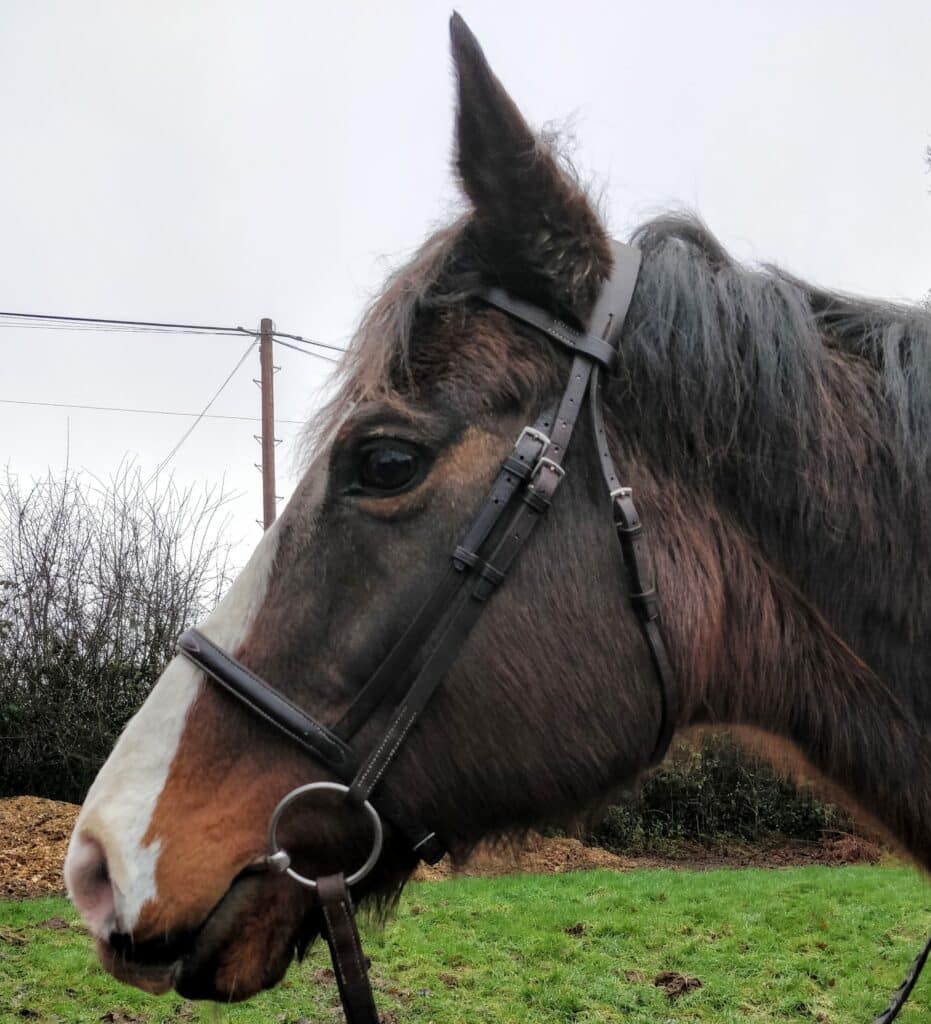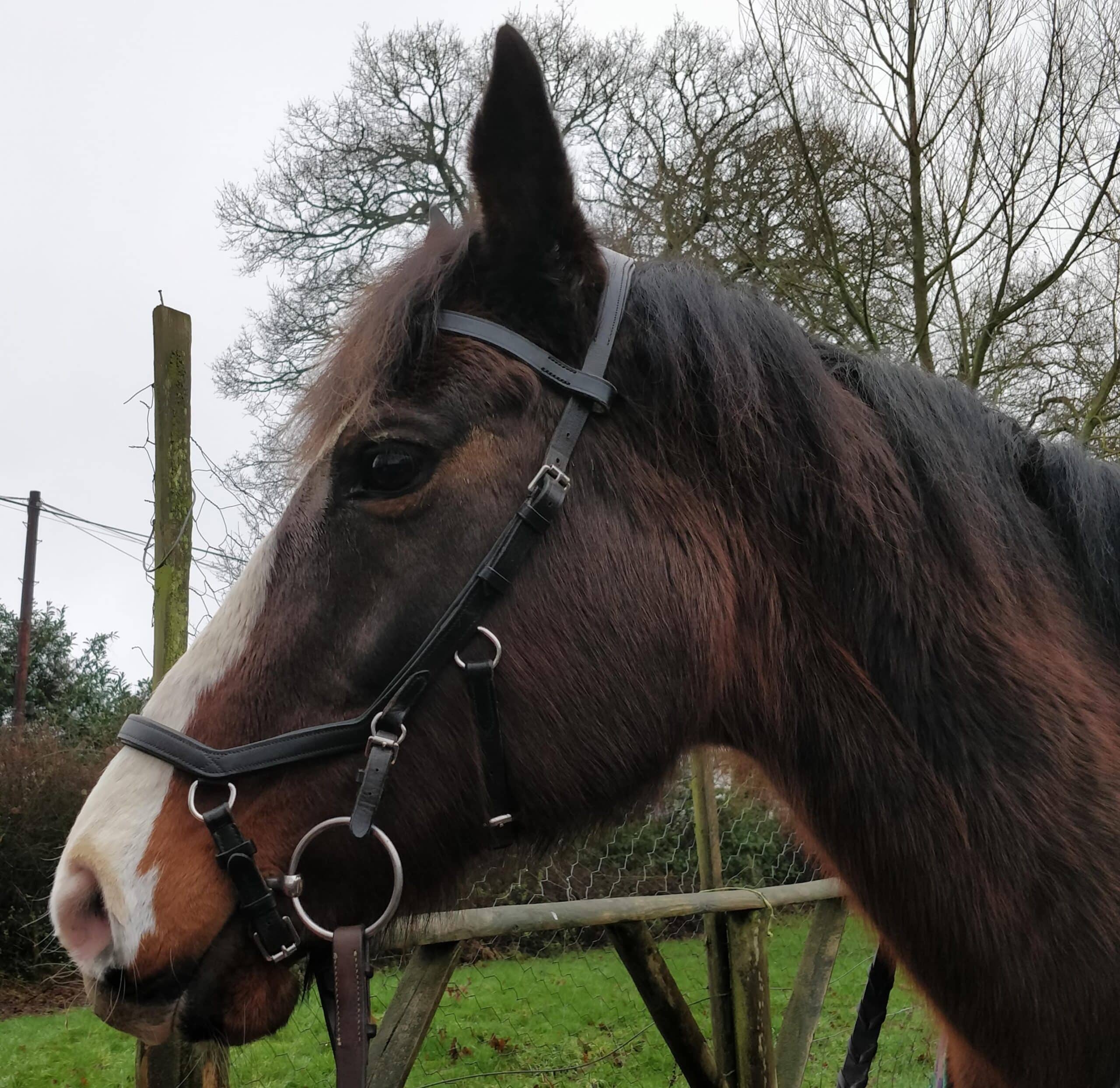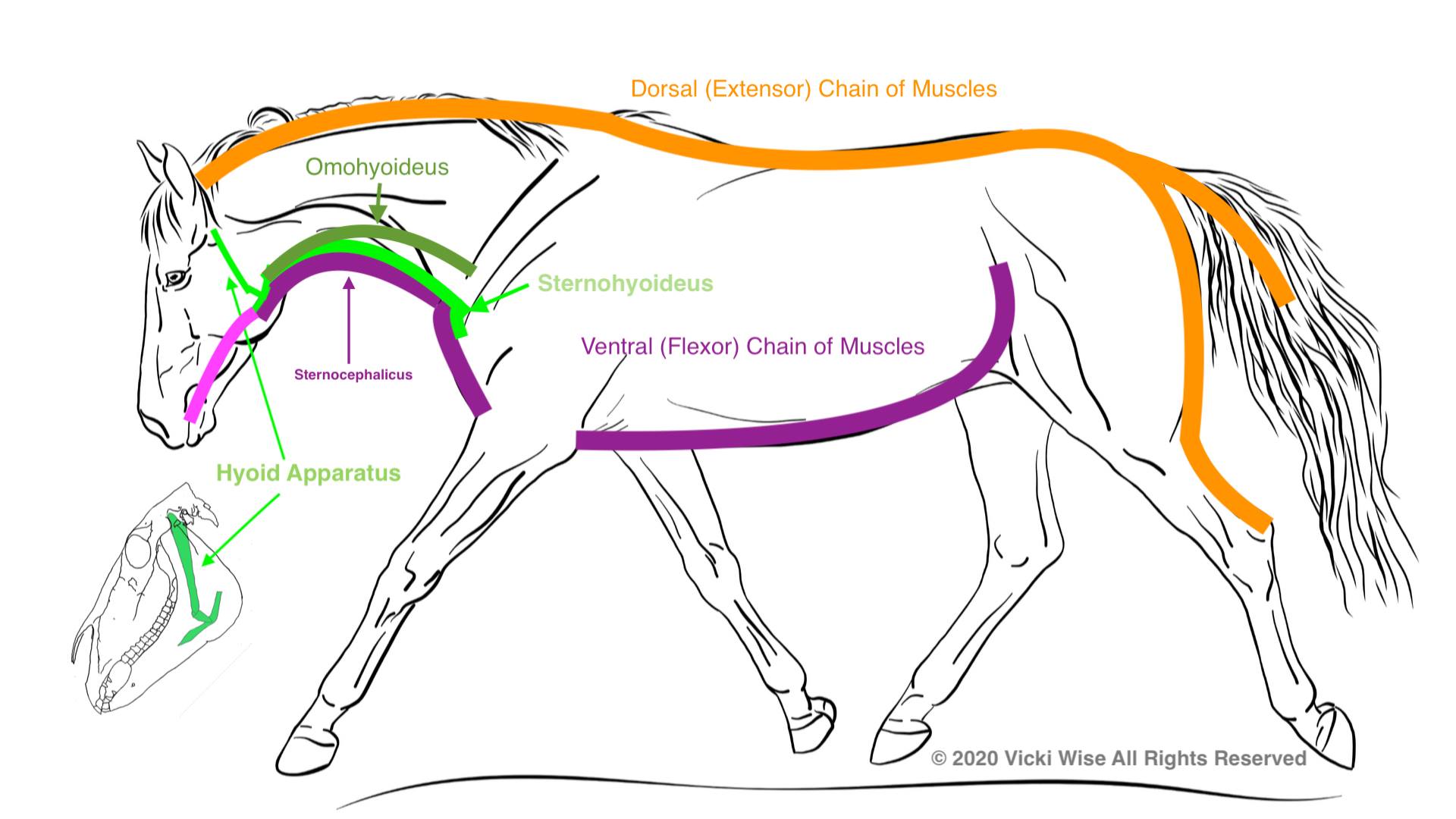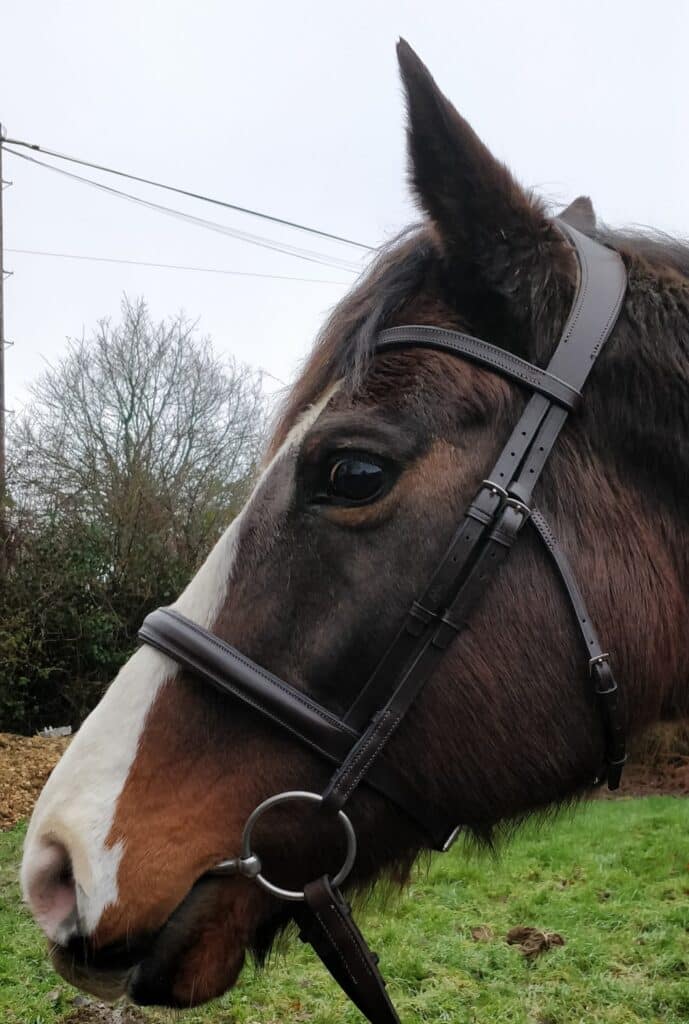Anatomy, Featured, Training and Management
How to fit a bridle – Understanding the anatomy of the horse’s head
Sue Stanbridge, discusses the anatomy of the horse’s head and, why a poorly fitting bridle can impact performance
There has been a great deal of information published on bridle fitting for the horse and, the effect it can have on their way of going, their behaviour and eventually their longevity and health. So, why do we see so many problems?
If we look at the provision of bridlework historically, most towns and villages would have had their own saddler, who made bridles for each horse as required. The popularity of horses and horse ownership, coupled with fewer people coming forward for apprenticeships has meant that bridle making has moved over to centralised factories, firstly in Walsall, the leather tanning centre of the UK, and latterly to the far east.
One of the results of this rationalisation is a loss of understanding of what constitutes good bridle design and fit. It used to be possible to buy a bridle with mix and match sizes. Something that bridles from the far east are not able to offer. Everything is down to a price, rather than up to a standard. So how do you find out ‘what is the best bridle for my horse?’

- Typical cob size bridle readily available from all tack shops
- A straight headpiece can press against ear cartilage
- A too tight, straight browband can increase pressure on TMJ area
- Attention should be paid to where the cheek pieces buckle
- Noseband strap runs over poll increasing pressure behind ears
Let’s look at the horse’s head from the poll down
Pressure map testing by companies such as Centaur Biomechanics saw that pressure over the top of the poll from a bridle was not a particular problem for the horse however, once testing moved down towards the base of the ears, the picture began to change. All bridle headpieces will come to rest behind the ear base. This, in itself is not a problem, however, if the browband is too tight, then the pressure changes as the headpiece is pulled into the base of the ear creating unwanted poll pressure.
There are 21 muscles in the base of each ear, which allows the horse a great deal of mobility. The ears are an incredibly important part of the horse’s sensory system that they use to alert themselves to danger. Restricting or compressing ear muscles can cause discomfort, which in turn raises adrenaline levels, something we don’t welcome in the ridden horse, as a rule.
Moving down, we encounter a large bony joint below the ear and behind the eye, on both sides. This is the TMJ (temporomandibular joint). This major joint allows the horse to move its jaw while eating. It is also a major nerve junction where information is sent to the brain, concerning balance, proprioception, posture, as well as sensation to the muzzle and lips. The most common issue we see here is a short, straight browband that transmits huge pressure to this area. For many horses who suffer from head shaking and flicking, these problems can be traced back to TMJ issues, or TMD – temporomandibular disfunction.
Running down the face are nerves from the TMJ area. Nerves which control the sensation in the muzzle and lips exit the skull through holes in the bone known as foramen. The Infraorbital foramen sits just in front of the horse’s cheekbone (facial crest) with a bundle of nerves emerging, rather like a telephone junction box. These nerves run down the face just under the skin. This means they are sensitive to pressure from tightly fitted nosebands. When pressed on, messages from the brain to the face are disrupted and, can cause great discomfort.
“Horses are obligate nasal breathers – in other words they breath ONLY through their nostrils”
People often ask me ‘why does my horse rub his head when I untack? Usually, this is because a tight noseband creates pressure, which can cause the horse to rub his head vigorously both when ridden, or untacked. The sensation is akin to pins and needles – not comfortable! Continual pressure can result in a horse exhibiting avoidance issues when being tacked up.
The other major exit place is the mental foramen, which sits to the side of the lower jaw. This is a place often restricted by use of a flash, grackle or drop noseband and again will cause the horse discomfort.
Cheek pieces
One area of bridle work which can cause a problem are the cheek pieces. On the majority of bridles these are too long. Guides on how to fit a bridle correctly (Pony Club Manual, British Horse Society manual) state that all buckles should sit level with the eye in order to avoid metal buckles sitting against the bony TMJ. As already discussed, TMJ issues can have a hugely detrimental effect on the horse’s health and comfort.
Nosebands
What a minefield these are. Again historically, most bridles came with a plain cavesson noseband. Occasionally we would see a horse in a drop noseband. Nowadays there are all sorts of designs. The vast majority have been devised without a great deal of attention to the anatomy of the horse’s head and, no consideration of the effect a poorly designed and adjusted noseband can have on the horse’s ability to recruit his muscles in the most efficient way.

- Headpiece is not ergonomically shaped to allow sufficient room for base of ears.
- Straight browband, can increase pressure on TMJ
- An integrated noseband can be difficult to adjust to the correct height. On this horse it is too low, sitting on the fragile nasal bones. To sit it higher the cheek buckle would sit too high on the face and, the jowl straps would sit too high on the cheek bone, potentially interfering with a large blood vessel which crosses the cheek bone. The lower strap can pull the bit up into the corners.
The lower face
We have already talked about where nerves exit from the skull and, we can see when they lie close to the surface just under the skin, how easy it is to cause restriction and discomfort to the horse.
A cavesson noseband should sit below the facial crest, ideally 1-2”, or a thumbs width down. If it is too low however, it will interfere with the soft channel of the horse’s nostril.
Horses are obligate nasal breathers. In other words, they ONLY breath through their nostrils. The lips need to be able to form a snug seal with each other to allow efficient breathing. To have a noseband too low, interferes with the horse’s ability to take in oxygen, think of going for a walk yourself if you have a blocked nose, it becomes harder to fuel your body and you have to breathe through your mouth – lucky us to have that option! Not so the horse, he must work very hard to expand his nostrils, which we may have inadvertently, but unhelpfully, restricted.
Drop nosebands, flash nosebands, double nosebands and all the other myriad of choices can restrict the horse’s ability to take in enough oxygen to work efficiently.
Inside the mouth
Finally, we need to consider the anatomy inside the horse’s mouth. Horses need regular dental checks if they are to be kept comfortable and able to work with calmness and good acceptance of the bit and bridle. The design of the horse’s skull means that the upper molars sit wider than the lower ones. If teeth are not checked and kept neatly rasped, they may develop hooks sharp edges or diastemas, which lead can to damage to the tongue, cheeks or gums. Can you imagine having a sharp edge to your tooth and also having a tightly fitted noseband pressing tender skin against the sharp edge?
Nosebands should be adjusted to a minimum of 2 fingers, inserted on the nasal plane, with the fingers on top of each other, not flat and definitely not assessed on any of the soft tissue areas. In other words, avoid noseband pressure.
The tongue is a large muscle that sits in the lower jaw. Its main function is to assist the horse with chewing and digesting food. It is extremely sensitive, being covered with approximately 4000 sensitive papillae. This helps the horse distinguish between food he can eat, and debris he can’t.
The hyoid apparatus
The tongue is attached to a little group of bones at the back of the skull called the hyoid bones. These are an incredibly important and unique group of bones. Firstly, they are not attached to any other bones using joints. They are attached with ligaments.

The front bone embeds into the tongue, with ligaments it then attaches to two long thin bones, which are situated inside the jaw that attach to the TMJ. Behind these are two small bones, which attach to muscles that run down the lower neck, into the scapula, along the abdominal wall and into the pelvis.
Problems with bridle fitting here, which restrict the ability of the tongue and lower jaw to move, will actually shut down the ability of the horse to recruit the lower ventral chain of muscles. If he cannot mobilise his jaw and tongue, he will send tension through the hyoid bones, up into the TMJ, down the muscles of the neck, through the thoracic sling and along the abdominal wall. This impacts his ability to lift his back and engage his hindquarters. The horse is then put in a U shape; putting pressure along the dorsal spinal processes, disconnecting his shoulder sling and raising his head by recruiting the muscles underneath. This is when we as riders, get locked into a spiral of asking our horses to lengthen their frame, drop their head, lift their back and engage their hindquarters but not allowing them to naturally use themselves biomechanically correctly.

- Headpiece shaped to give base of ear more room
- Wave shaped browband which is ergonomically better around TMJ
- Cheek pieces and noseband buckles are shorter than on standard bridles to avoid buckling up over sensitive TMJ area
- Throatlash sits on cheek hanger to remove pressure behind ear
- Noseband sits below facial crest and is loosely done up to allow two fingers room on nasal bone
A well-fitting bridle can help the horse work more effectively and efficiently, into the correct outline, use his hindquarters effectively, become softer in front, allow the flow of blood, lymph and plasma to each and every muscle being used, which can prolong the horse’s active healthy life.
Food for thought?
Further information is available in What can we learn about our tack choices from a whole horse dissection and in our webinar The biomechanics of bridle and bit fit
For questions, more information or to purchase an anatomical bridle, contact Sue at Dragonfly Saddlery or to find a qualified specialist visit Horse Bit Fit
